Cognitive Computing—Will It Be the Future “Smart Power” for the Energy Enterprises?
Abstract
:1. Introduction
Literature Review
2. Materials and Methods
- (a)
- “Besides the structural differences between the platforms, there are also differences in the classification of the information adopted by each of them. For example, if the same search criteria were applied to different platforms, the results returned may not be the same.
- (b)
3. Results
4. Discussion
5. Conclusions
Funding
Institutional Review Board Statement
Informed Consent Statement
Data Availability Statement
Conflicts of Interest
Appendix A
| Computer Vision | Deep Learning | Human–Computer Interactions | NL Processing | Neural Networks | Real-Time Decision Making | Sentiment Analysis | Reasoning | |||||||||
|---|---|---|---|---|---|---|---|---|---|---|---|---|---|---|---|---|
| Computer vision | Pearson’s r | — | ||||||||||||||
| p-value | — | |||||||||||||||
| Deep learning | Pearson’s r | 0.683 | * | — | ||||||||||||
| p-value | 0.014 | — | ||||||||||||||
| Human–computer interactions | Pearson’s r | 0.910 | *** | 0.475 | — | |||||||||||
| p-value | <0.001 | 0.119 | — | |||||||||||||
| NL processing | Pearson’s r | 0.912 | *** | 0.890 | *** | 0.761 | ** | — | ||||||||
| p-value | <0.001 | <0.001 | 0.004 | — | ||||||||||||
| Neural Networks | Pearson’s r | 0.863 | *** | 0.912 | *** | 0.671 | * | 0.953 | *** | — | ||||||
| p-value | <0.001 | <0.001 | 0.017 | <0.001 | — | |||||||||||
| Real-time decision making | Pearson’s r | 0.935 | *** | 0.863 | *** | 0.800 | ** | 0.981 | *** | 0.970 | *** | — | ||||
| p-value | <0.001 | <0.001 | 0.002 | <0.001 | <0.001 | — | ||||||||||
| Sentiment analysis | Pearson’s r | 0.826 | *** | 0.912 | *** | 0.747 | ** | 0.916 | *** | 0.909 | *** | 0.925 | *** | — | ||
| p-value | <0.001 | <0.001 | 0.005 | <0.001 | <0.001 | <0.001 | — | |||||||||
| Reasoning | Pearson’s r | 0.957 | *** | 0.669 | * | 0.878 | *** | 0.902 | *** | 0.881 | *** | 0.950 | *** | 0.804 | ** | — |
| p-value | <0.001 | 0.017 | <0.001 | <0.001 | <0.001 | <0.001 | 0.002 | — | ||||||||
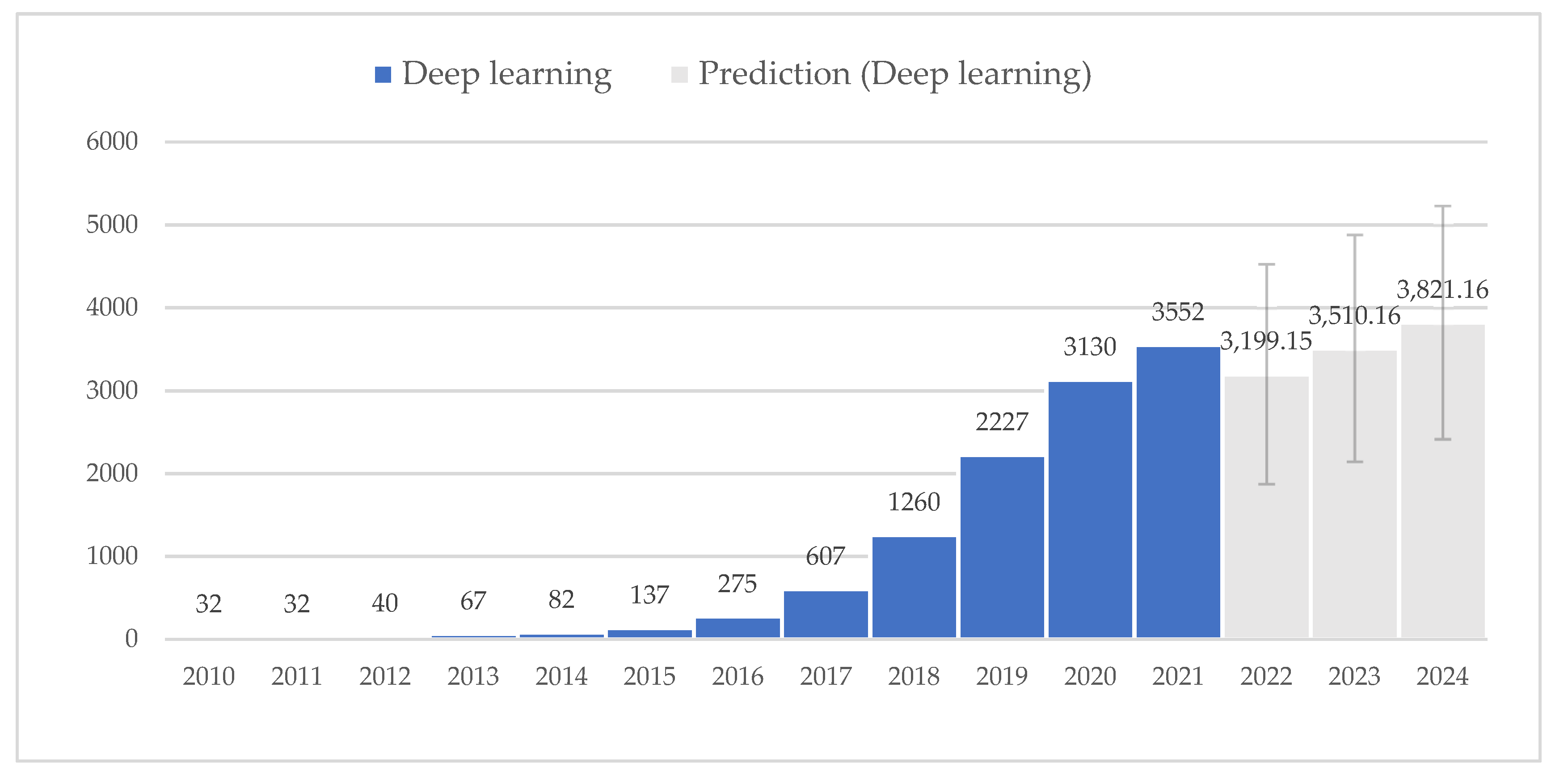
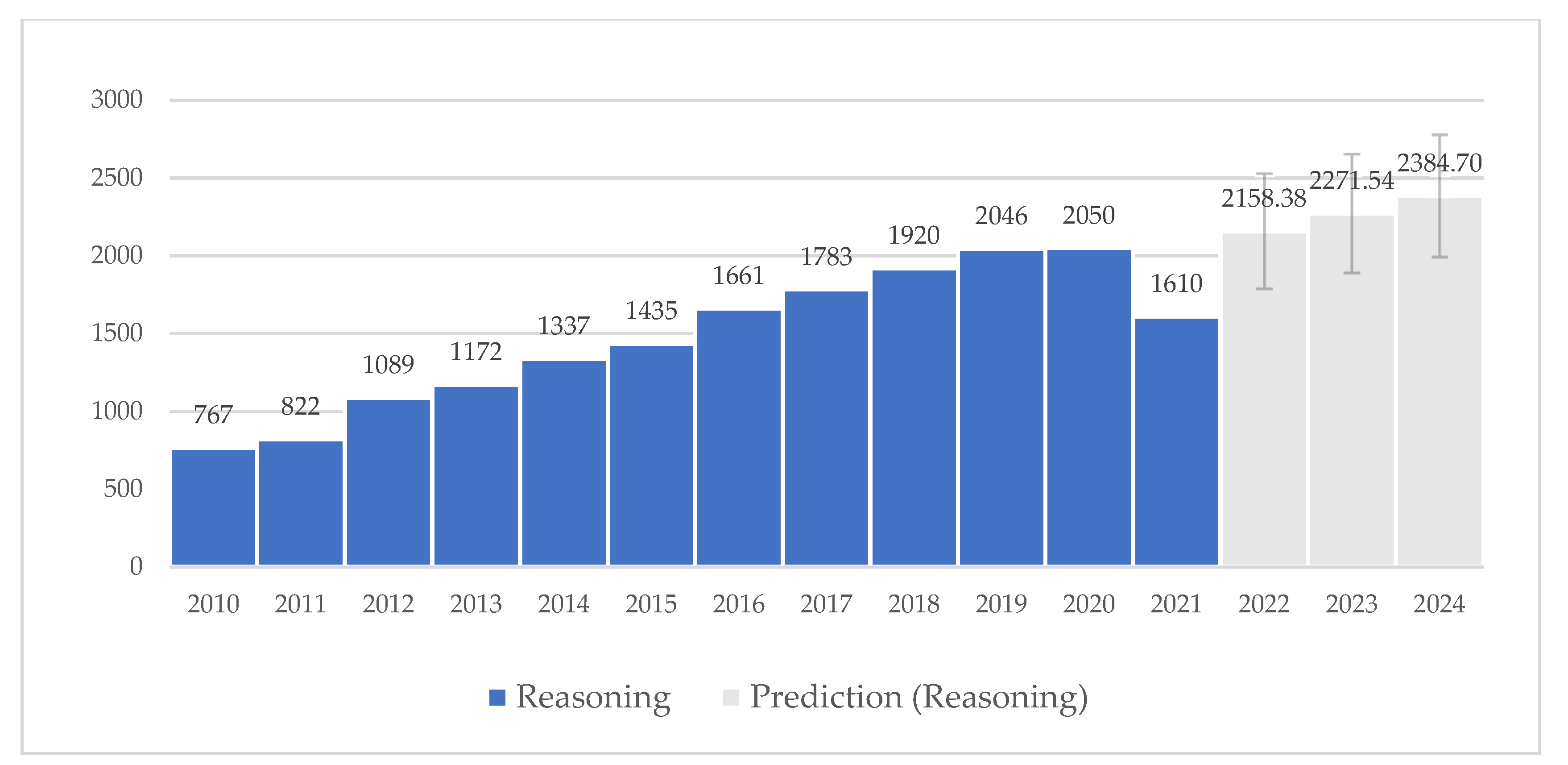
References
- Elia, G.; Margherita, A. A conceptual framework for the cognitive enterprise: Pillars, maturity, value drivers. Technol. Anal. Strateg. Manag. 2021, 34, 377–389. [Google Scholar] [CrossRef]
- Cognitive Computing. Available online: http://en.wikipedia.org/wiki/Cognitive_computing (accessed on 13 May 2022).
- Furbach, U.; Hölldobler, S.; Ragni, M.; Schon, C.; Stolzenburg, F. Cognitive Reasoning: A Personal View. KI-Künstliche Intell. 2019, 33, 209–217. [Google Scholar] [CrossRef]
- Hurwitz, J.; Kaufman, M.; Bowles, A. Foundations of Cognitive Computing. In Cognitive Computing and Big Data Analytics; Wiley: New York, NY, USA, 2015. [Google Scholar]
- Hurwitz, J.; Kaufman, M.; Bowles, A. What makes a system cognitive? In Cognitive Computing and Big Data Analytics; Wiley: New York, NY, USA, 2015. [Google Scholar]
- Tarafdar, M.; Beath, C.M.; Ross, J.W. Enterprise Cognitive Computing Applications: Opportunities and Challenges. IT Prof. 2017, 19, 21–27. [Google Scholar] [CrossRef]
- What Is “Cognitive Enterprise”? Available online: https://blog.myplanet.com/what-is-cognitive-enterprise-acd3bf50986b (accessed on 8 July 2022).
- Available online: https://www.onlinewhitepapers.com/information-technology/7-keys-to-creating-a-cognitive-enterprise-with-ai/ (accessed on 8 July 2022).
- Ramadoss, B. Enabling A Cognitive Enterprise. The Cognitive Enterprise: Activating Cognitive DNA. Forbes. 2019. Available online: https://www.forbes.com/sites/forbestechcouncil/2019/08/28/the-cognitive-enterprise-activating-cognitive-dna/?sh=607b669e58bf (accessed on 1 July 2022).
- Finger, M.; Portmann, E. What are Cognitive Cities? In Towards Cognitive Cities; Springer: Cham, Switzerland, 2016; pp. 1–11. [Google Scholar]
- Moyser, R.; Uffer, S. From Smart to Cognitive: A Roadmap for the Adoption of Technology in Cities. In Towards Cognitive Cities; Springer: Cham, Switzerland, 2016; pp. 13–35. [Google Scholar]
- D’Onofrio, S.; Portmann, E. Cognitive Computing in Smart Cities. Inform. Spektrum 2017, 40, 46–57. [Google Scholar]
- Cuenca, J.; Larrinaga, F.; Eciolaza, L.; Curry, E. Towards Cognitive Cities in the Energy Domain. In Designing Cognitive Cities; Springer: Cham, Switzerland, 2018. [Google Scholar]
- Chai, E.; Zeng, P.P.; Ma, S.; Xing, H.; Zhao, B. Artificial Intelligence Approaches to Fault Diagnosis in Power Grids: A Review. In Proceedings of the 2019 Chinese Control Conference (CCC), Guangzhou, China, 27–30 July 2019; pp. 7346–7353. [Google Scholar]
- Tang, Y.; Huang, Y.; Wang, H.; Wang, C.; Guo, Q.; Yao, W. Framework for artificial intelligence analysis in large-scale power grids based on digital simulation. CSEE J. Power Energy Syst. 2018, 4, 459–468. [Google Scholar] [CrossRef]
- Zhang, Y.; Yu, R.; Nekovee, M.; Liu, Y.; Xie, S.; Gjessing, S. Cognitive machine-to-machine communications: Visions and potentials for the smart grid. IEEE Netw. 2012, 26, 6–13. [Google Scholar] [CrossRef]
- Kottas, T.; Stimoniaris, D.; Tsiamitros, D.; Kikis, V.; Boutalis, Y.; Dialynas, E. New Operation Scheme and Control of Smart Grids Using Fuzzy Cognitive Networks. In Proceedings of the 2015 IEEE Eindhoven PowerTech, Eindhoven, The Netherlands, 29 June–2 July 2015; pp. 1–5. [Google Scholar]
- Bicen, A.O.; Akan, O.B.; Gungor, V.C. Spectrum-aware and cognitive sensor networks for smart grid applications. IEEE Commun. Mag. 2012, 50, 158–165. [Google Scholar] [CrossRef]
- Bu, S.; Yu, F.R. Green cognitive mobile networks with small cells for multimedia communications in the smart grid environment. IEEE Trans. Veh. Technol. 2014, 63, 2115–2126. [Google Scholar] [CrossRef]
- Hu, J.; Liu, D.; Du, C.; Yan, F.; Lv, C. Intelligent energy management strategy of hybrid energy storage system for electric vehicle based on driving pattern recognition. Energy 2020, 198, 117298. [Google Scholar] [CrossRef]
- Fleming, J.; Amietszajew, T.; Roberts, A. In-situ electronics and communications for intelligent energy storage. HardwareX 2022, 11, e00294. [Google Scholar] [CrossRef]
- Alshehri, J.; Khalid, M.; Alzahrani, A. An intelligent battery energy storage-based controller for power quality improvement in microgrids. Energies 2019, 12, 2112. [Google Scholar] [CrossRef] [Green Version]
- Gao, G.; Song, C.; Bandara, T.G.T.A.; Shen, M.; Yang, F.; Posdorfer, W.; Tao, D.; Wen, Y. FogChain: A Blockchain-based Peer-to-Peer Solar Power Trading System Powered by Fog AI. IEEE Internet Things J. 2021, 9, 5200–5215. [Google Scholar] [CrossRef]
- Yang, S.-Y.; Kim, Y.-H.; Lee, W.; Kim, W.-J. The Power Brokerage Trading System for Efficient Management of Small-Scale Distributed Energy-Resources. J. Korea Inst. Electron. Commun. Sci. 2021, 16, 735–742. [Google Scholar]
- Shen, Y.; Zhang, J.; Song, S.H.; Letaief, K.B. AI empowered resource management for future wireless networks. In Proceedings of the 2021 IEEE International Mediterranean Conference on Communications and Networking (MeditCom), Athens, Greece, 7–10 September 2021; pp. 252–257. [Google Scholar]
- Boudi, A.; Bagaa, M.; Pöyhönen, P.; Taleb, T.; Flinck, H. AI-based resource management in beyond 5G cloud native environment. IEEE Netw. 2021, 35, 128–135. [Google Scholar] [CrossRef]
- Afzaal, H.; Farooque, A.A.; Abbas, F.; Acharya, B.; Esau, T. Computation of evapotranspiration with artificial intelligence for precision water resource management. Appl. Sci. 2020, 10, 1621. [Google Scholar] [CrossRef]
- Xiang, X.; Li, Q.; Khan, S.; Khalaf, O.I. Urban water resource management for sustainable environment planning using artificial intelligence techniques. Environ. Impact Assess. Rev. 2021, 86, 106515. [Google Scholar] [CrossRef]
- Tuli, S.; Gill, S.S.; Xu, M.; Garraghan, P.; Bahsoon, R.; Dustdar, S.; Sakellariou, R.; Rana, O.; Buyya, R.; Casale, G.; et al. R HUNTER: AI based holistic resource management for sustainable cloud computing. J. Syst. Softw. 2022, 184, 111124. [Google Scholar] [CrossRef]
- Arooj, A.; Farooq, M.S.; Umer, T.; Shan, R.U. Cognitive internet of vehicles and disaster management: A proposed architecture and future direction. Trans. Emerg. Tele-Commun. Technol. 2019, e3625. [Google Scholar] [CrossRef]
- Al-Turjman, F. Cognitive routing protocol for disaster-inspired internet of things. Future Gener. Comput. Syst. 2019, 92, 1103–1115. [Google Scholar] [CrossRef]
- Ali, K.; Nguyen, H.X.; Vien, Q.-T.; Shah, P.; Chu, Z. Disaster management using D2D communication with power transfer and clustering techniques. IEEE Access 2018, 6, 14643–14654. [Google Scholar] [CrossRef]
- Kankanamge, N.; Yigitcanlar, T.; Goonetilleke, A. Public perceptions on artificial intelligence driven disaster management: Evidence from Sydney, Melbourne and Brisbane. Telemat. Inform. 2021, 65, 101729. [Google Scholar] [CrossRef]
- Moisescu, M.A.; Sacala, I.S.; Dumitrache, I.; Caramihai, S.I.; Barbulescu, B.; Danciuc, M. A cyber-physical systems approach to cognitive enterprise. Period. Eng. Nat. Sci. 2019, 7, 337–342. [Google Scholar] [CrossRef]
- Panneerselvam, A. Intelligent Workflow Adaptation in Cognitive Enterprise: Design and Techniques. In Operationalizing Multi-Cloud Environments; Nagarajan, R., Raj, P., Thirunavukarasu, R., Eds.; EAI/Springer Innovations in Communication and Computing; Springer: Cham, Switzerland, 2022. [Google Scholar] [CrossRef]
- Callahan, S. How To Gird The Electric Grid More Efficiently By Using Cognitive Computing. 2017. Available online: https://www.ibm.com/blogs/think/2017/01/cognitive-grid/ (accessed on 12 June 2022).
- Pilipczuk, O.; Eidenzon, D. The Application of Cognitive Computer Graphics to Economic Data Exploration. J. Autom. Mob. Robot. Intell. Syst. 2013, 7, 3–9. [Google Scholar]
- Oleksyk, P.; Hernes, M.; Nita, B.; Dudycz, H.; Kozina, A.; Janus, J. Supporting Investment Decisions Based on Cognitive Technology. In Towards Industry 4.0—Current Challenges in Information Systems; Hernes, M., Rot, A., Jelonek, D., Eds.; Studies in Computational Intelligence; Springer: Cham, Switzerland, 2020; Volume 887. [Google Scholar] [CrossRef]
- Cognitive Computing Applications for Risk Management. Deloitte, 2022. Available online: https://www2.deloitte.com/bg/en/pages/risk/articles/cognitive-computing.html (accessed on 1 July 2022).
- Samanta, S.R.; Mallick, P.K.; Pattnaik, P.K.; Mohanty, J.R.; Polkowski, Z. (Eds.) Cognitive Computing for Risk Management; Springer: Cham, Switzerland, 2022. [Google Scholar]
- Eftimie, S.; Moinescu, R.; Răcuciu, C. Using cognitive computing for a secure cloud in the energy sector. Sci. Bull.Nav. Acad. 2019, 22, 52–58. [Google Scholar] [CrossRef]
- Huang, X. A Data-Driven WSN Security Threat Analysis Model Based on Cognitive Computing. J. Sens. 2022, 2022, 1–10. [Google Scholar] [CrossRef]
- Zhu, R.; Liu, L.; Ma, M.; Li, H. Cognitive-inspired computing: Advances and novel applications. Future Gener. Comput. Syst. 2020, 109, 706–709. [Google Scholar] [CrossRef]
- Aghav-Palwe, S.; Gunjal, A. Introduction to cognitive computing and its various applications. In Cognitive Computing for Human-Robot Interaction; Academic Press: Cambridge, UK, 2021; pp. 1–18. [Google Scholar]
- Opportunities and Challenges of Artificial Intelligence in the Energy Sector. 2020. Available online: https://intellias.com/opportunities-and-challenges-of-artificial-intelligence-in-the-energy-sector/. (accessed on 12 May 2022).
- Ahmad, T.; Zhang, D.; Huang, C.; Zhang, H.; Dai, N.; Song, Y.; Chen, H. Artificial intelligence in sustainable energy industry: Status Quo, challenges and opportunities. J. Clean. Prod. 2021, 289, 125834. [Google Scholar] [CrossRef]
- Foster, M. Building the Cognitive Enterprise: Nine Action Areas A Blueprint for AI-Powered Transformation. Available online: https://www.ibm.com/thought-leadership/institute-business-value/report/build-cognitive-enterprise (accessed on 1 June 2022).
- Foster, M. Building the Cognitive Enterprise: Nine Action Areas Deep Dive. Available online: https://www.ibm.com/downloads/cas/JKJA41PW (accessed on 2 June 2022).
- Ramadoss, B. The Cognitive Enterprise: Activating Cognitive DNA. Available online: https://www.forbes.com/sites/forbestechcouncil/2019/08/28/the-cognitive-enterprise-activating-cognitive-dna/?sh=5c3db1ab58bf (accessed on 11 June 2022).
- Ye, J.; Pang, S. Special issue on cognitive-inspired computing and applications. Neural Comput. Appl. 2022, 34, 2501–2502. [Google Scholar] [CrossRef]
- Broadus, R. Toward a definition of “bibliometrics”. Scientometrics 1987, 12, 373–379. [Google Scholar] [CrossRef]
- Liao, H.; Tang, M.; Luo, L.; Li, C.; Chiclana, F.; Zeng, X.-J. A bibliometric analysis and visualization of medical big data research. Sustainability 2018, 10, 166. [Google Scholar] [CrossRef]
- Diem, A.; Wolter, S.C. The use of bibliometrics to measure research performance in education sciences. Res. High. Educ. 2013, 54, 86–114. [Google Scholar] [CrossRef] [Green Version]
- Ismail, S.; Nason, E.; Marjanovic, S.; Grant, J. Bibliometrics as a tool for supporting prospective R&D decision-making in the health sciences: Strengths, weaknesses and options for future development. Rand Health Q. 2012, 1, 11. [Google Scholar]
- De Oliveira, O.J.; Da Silva, F.F.; Juliani, F.; Barbosa, L.C.F.M.; Nunhes, T.V. Bibliometric Method for Mapping the State-of-the-Art and Identifying Research Gaps and Trends in Literature: An Essential Instrument to Support the Development of Scientific Projects. In Scientometrics Recent Advances; Kunosic, S., Zerem, E., Eds.; IntechOpen: London, UK, 2019. [Google Scholar] [CrossRef]
- Abrizah, A.; Zainab, A.; Kiran, K.; Raj, R. LIS journals scientific impact and subject categorization: A comparison between Web of Science and Scopus. Scientometrics 2013, 94, 721–740. [Google Scholar] [CrossRef]
- Bartol, T.; Budimir, G.; Dekleva-Smrekar, D.; Pusnik, M.; Južnič, P. Assessment of research fields in Scopus and Web of Science in the view ofnational research evaluation in Slovenia. Scientometrics 2014, 98, 1491–1504. [Google Scholar] [CrossRef]
- Juliani, F.; de Oliveira, O.J. State of research on public service management: Identifying scientific gaps from a bibliometric study. Int. J. Inf. Manag. 2016, 36, 1033–1041. [Google Scholar] [CrossRef]
- Filser, L.D.; Da Silva, F.F.; de Oliveira, O.J. State of research and future research tendencies in lean healthcare: A bibliometric analysis. Scientometrics 2017, 112, 799–816. [Google Scholar] [CrossRef]
- Reyes-Belmonte, M.Á. A Bibliometric Study on Integrated Solar Combined Cycles (ISCC), Trends and Future Based on Data Analytics Tools. Sustainability 2020, 12, 8217. [Google Scholar] [CrossRef]
- Trianni, A.; Merigó, J.M.; Bertoldi, P. Ten years of Energy Efficiency: A bibliometric analysis. Energy Effic. 2018, 11, 1917–1939. [Google Scholar] [CrossRef]
- Opejin, A.K.; Aggarwal, R.M.; White, D.D.; Jones, J.L.; Maciejewski, R.; Mascaro, G.; Sarjoughian, H.S. A Bibliometric Analysis of Food-Energy-Water Nexus Literature. Sustainability 2020, 12, 1112. [Google Scholar] [CrossRef]
- Akbari, M.; Khodayari, M.; Danesh, M.; Davari, A.; Padash, H. A bibliometric study of sustainable technology research. Cogent Bus. Manag. 2020, 7, 1751906. [Google Scholar] [CrossRef]
- Muhtar, E.A.; Rusli, B.; Karlina, N.; Candradewini, C.; Muharam, R.S. Bibliometric Analysis and Visualization of Energy Economics and Policy in Scopus from 2010 to 2021. Int. J. Energy Econ. Policy 2021, 11, 503–507. [Google Scholar] [CrossRef]
- Ziabina, Y.; Pimonenko, T. The Green Deal Policy for Renewable Energy: A Bibliometric Analysis. Virtual Econ. 2020, 3, 147–168. [Google Scholar] [CrossRef]
- Kumar, R.; Singh, S.; Sidhu, A.; Pruncu, C.I. Bibliometric analysis of specific energy consumption (SEC) in machining operations: A sustainable response. Sustainability 2021, 13, 5617. [Google Scholar] [CrossRef]
- Xiao, Y.; Wu, H.; Wang, G.; Mei, H. Mapping the Worldwide Trends on Energy Poverty Research: A Bibliometric Analysis (1999–2019). Int. J. Environ. Res. Public Health 2021, 18, 1764. [Google Scholar] [CrossRef] [PubMed]
- Zhang, Y.; Yu, Q.; Li, J. Bioenergy research under climate change: A bibliometric analysis from a country perspective. Environ. Sci. Pollut. Res. 2021, 28, 26427–26440. [Google Scholar] [CrossRef]
- Rosokhata, A.; Minchenko, M.; Khomenko, L.; Chygryn, O. Renewable energy: A bibliometric analysis. E3S Web Conf. 2021, 250, 03002. [Google Scholar] [CrossRef]
- Ziegler. Methods for Bibliometric Analysis of Research: Renewable Energy Case Study; Working Paper CISL# 2009-10; E.E.C.S. M.I.T.: Cambridge, UK, 2008. [Google Scholar]
- Qin, Y.; Xu, Z.; Wang, X.; Škare, M. Green energy adoption and its determinants: A bibliometric analysis. Renew. Sustain. Energy Rev. 2022, 153, 111780. [Google Scholar] [CrossRef]
- Conversational AI Technology—Inbenta—Artificial Intelligence. Available online: https://www.inbenta.com/en/technology/ai-nlp/natural-language-technology/conversational-ai/ (accessed on 12 June 2022).
- Pilipczuk, O. Sustainable Smart Cities and Energy Management: The Labor Market Perspective. Energies 2020, 13, 6084. [Google Scholar] [CrossRef]
- Makala, B.; Bakovic, T. Artificial Intelligence in the Power Sector, NOTE 81. 2020. Available online: https://www.ifc.org/wps/wcm/connect/bd3a196d-a88f-45af-bbc6-e0b00790fba8/EMCompass_Note_81-05-web.pdf?MOD=AJPERES&CVID=n72pj5g (accessed on 12 June 2022).
- Haksar, V.; Carrière-Swallow, Y.; Giddings, A.; Islam, E.; Kao, K.; Kopp, E.; Quirós-Romero, G. Toward a Global Approach to Data in the Digital Age. SDN/2021/005. 2021. Available online: https://www.imf.org/en/Publications/Staff-Discussion-Notes/Issues/2021/10/06/Towards-a-Global-Approach-to-Data-in-the-Digital-Age-466264 (accessed on 8 May 2022).
- Korinek, A.; Schindler, M.; Stiglitz, J. Technological Progress, Artificial Intelligence, and Inclusive Growth; IMF Working Papers; International Monetary Fund: Washington, DC, USA, 2021. [Google Scholar] [CrossRef]
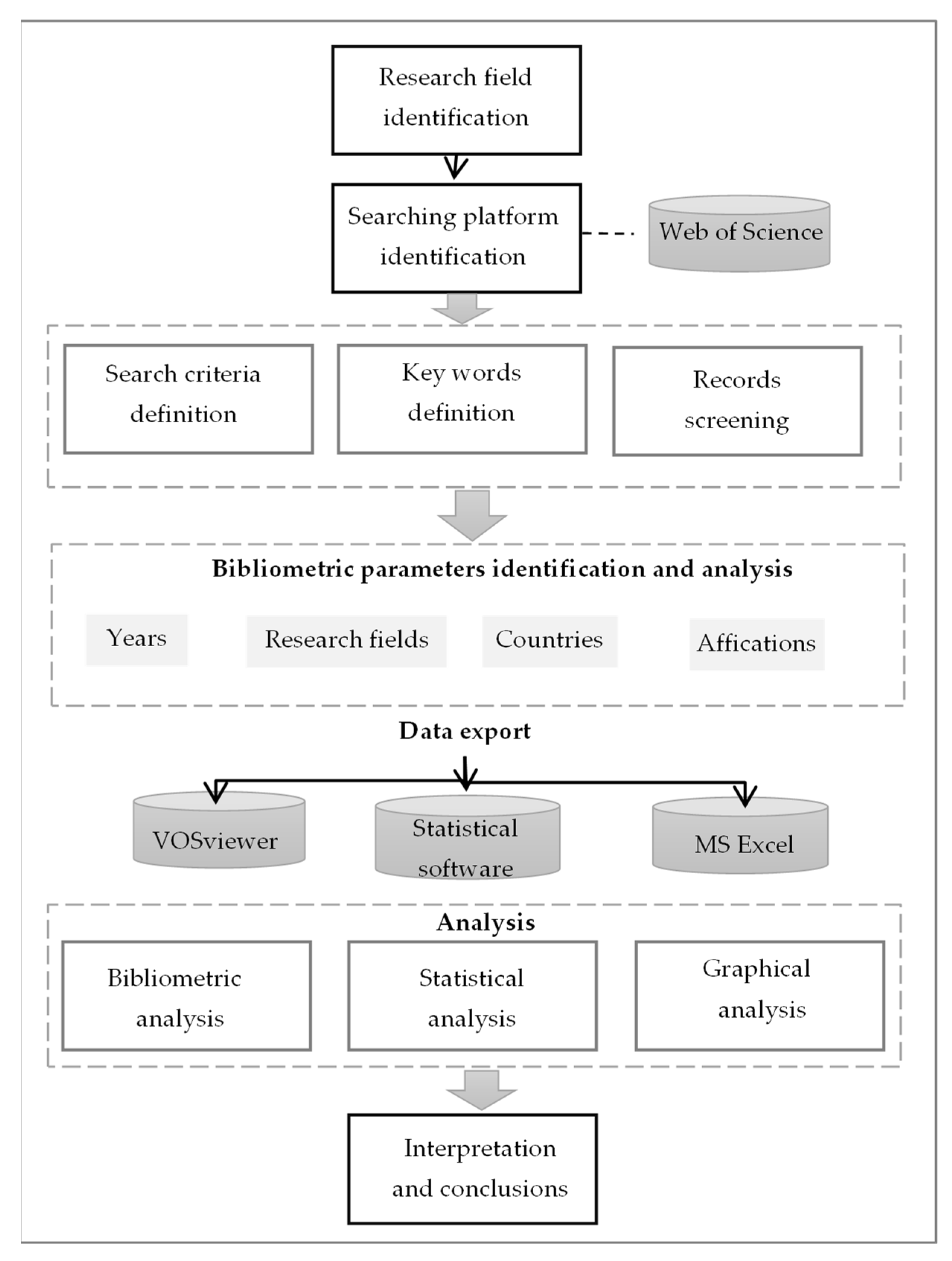
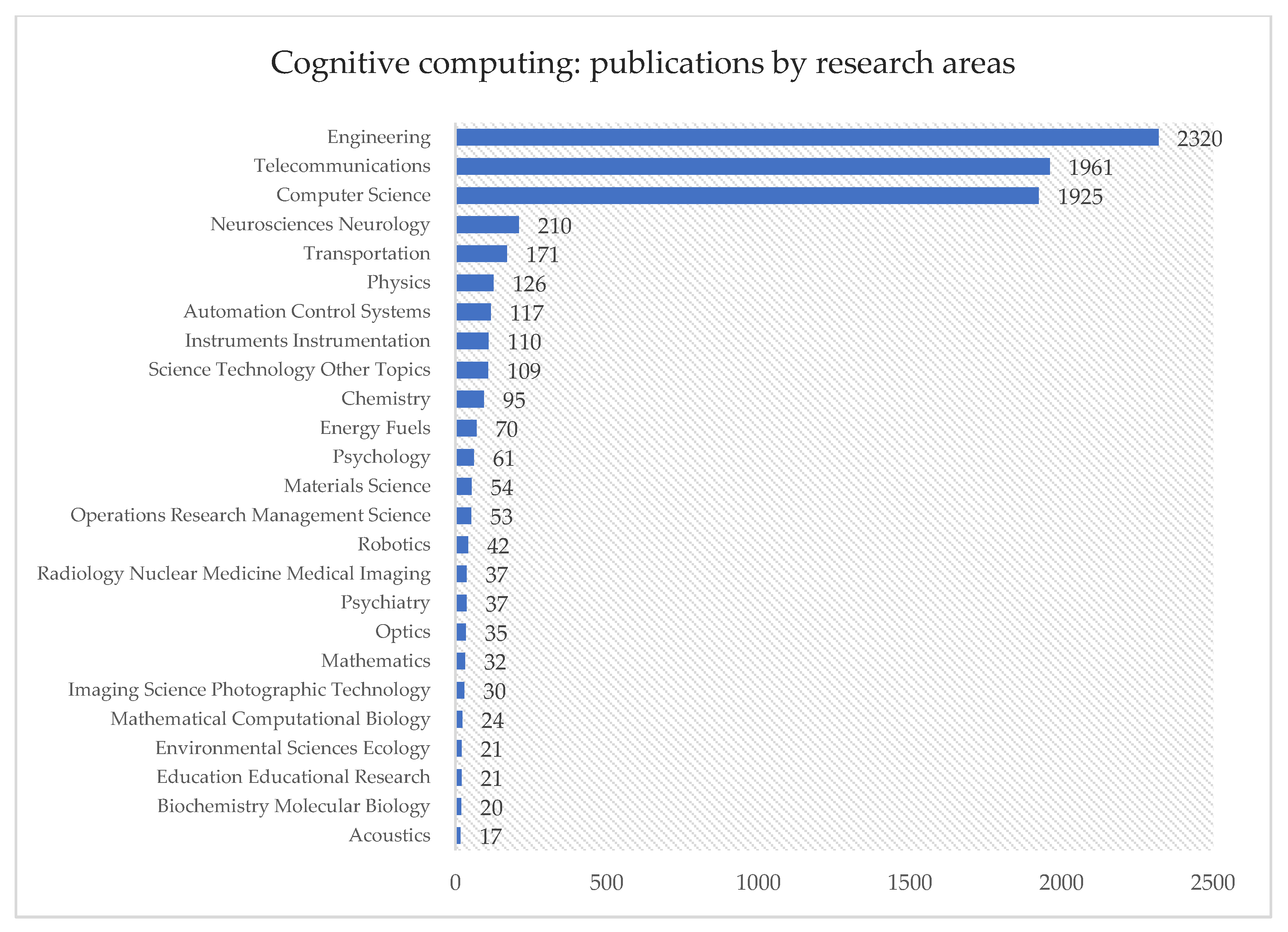
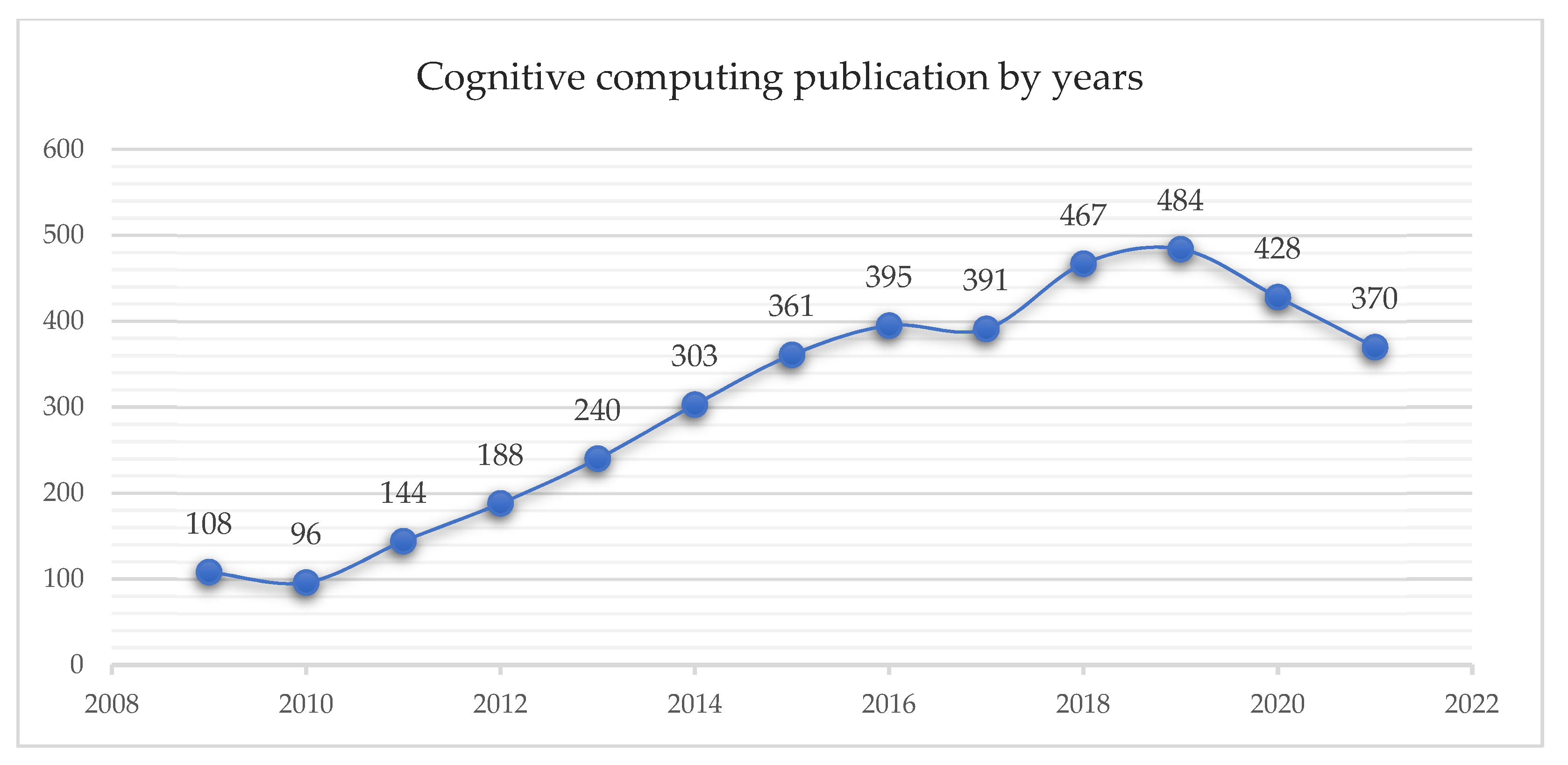

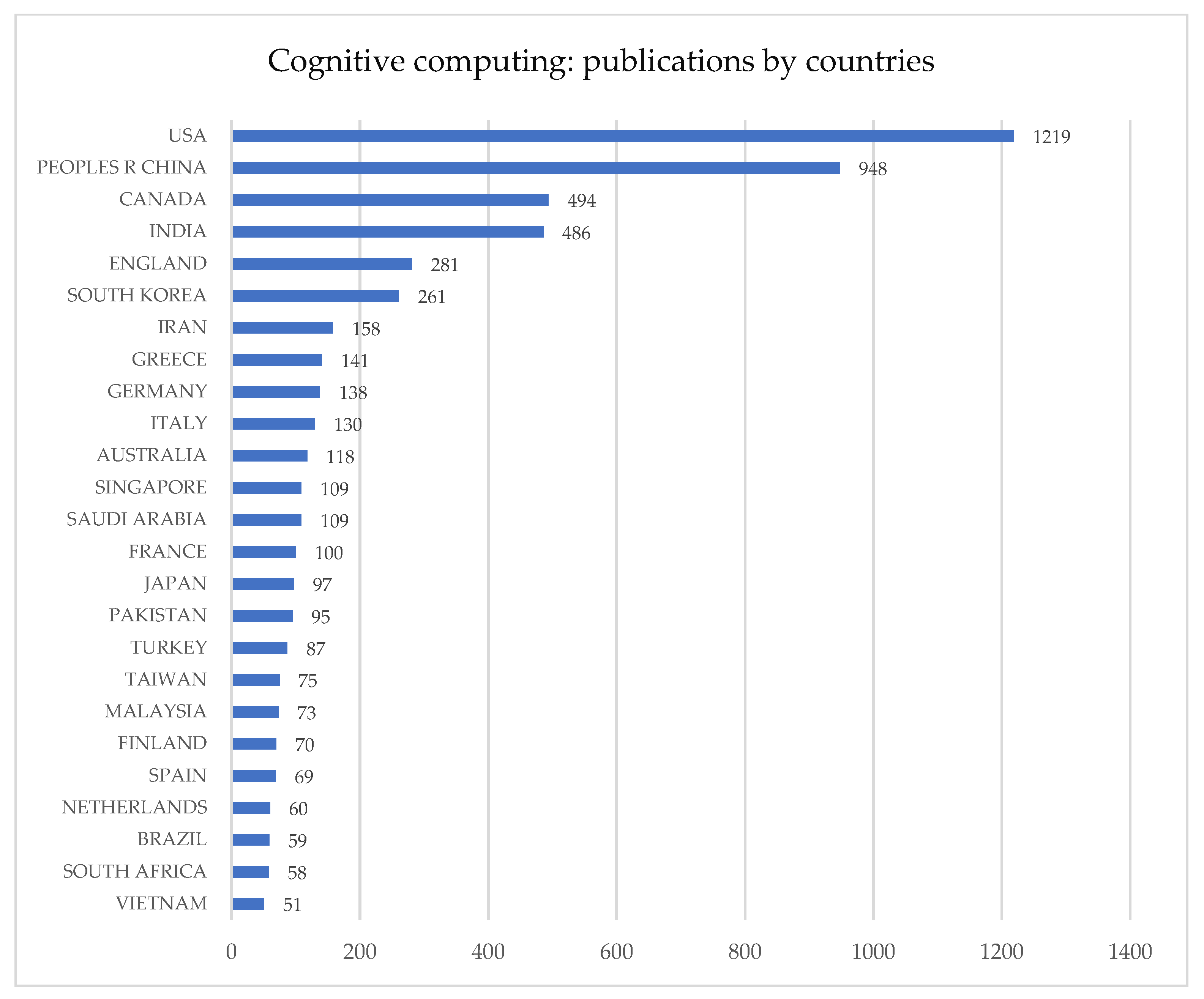

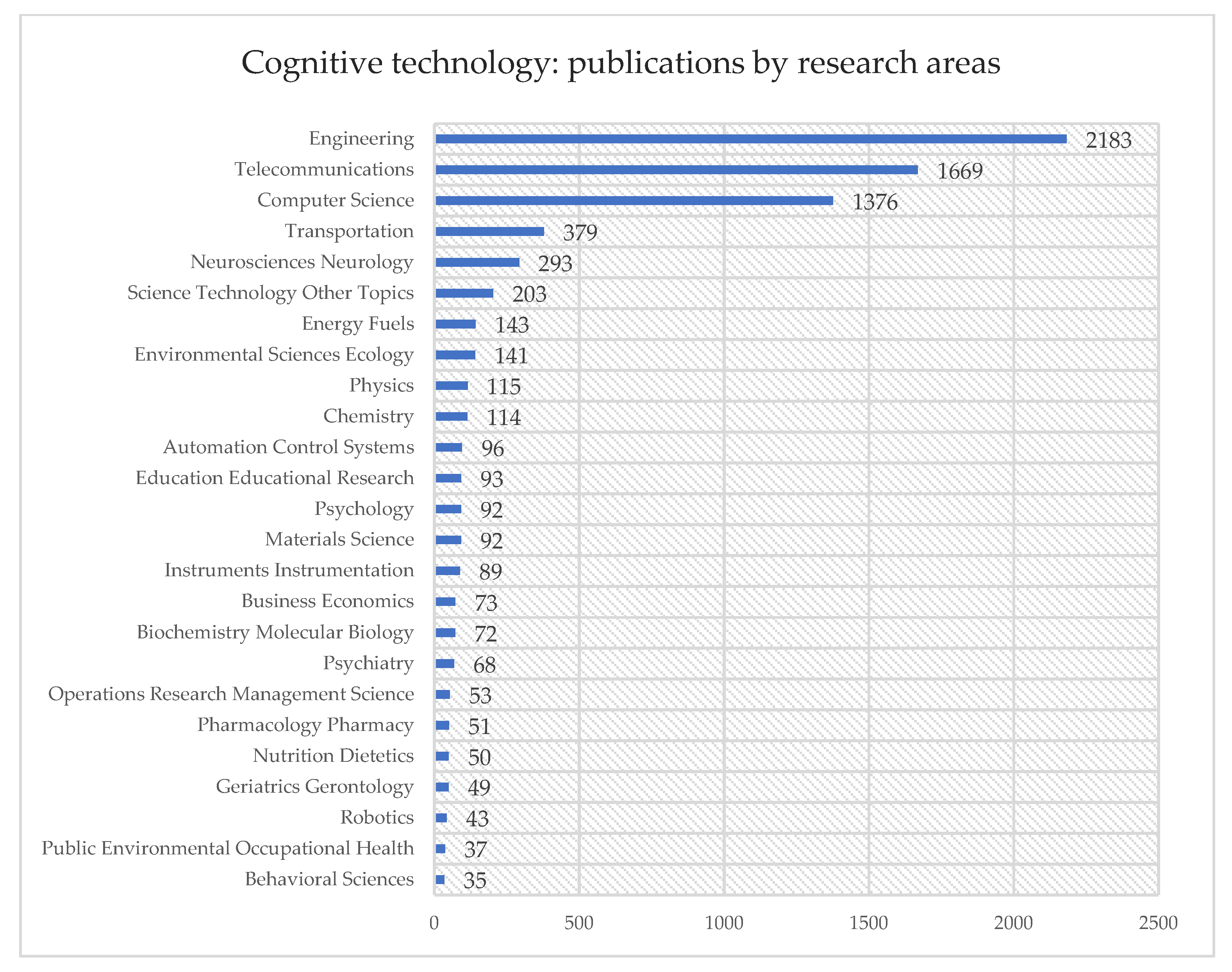
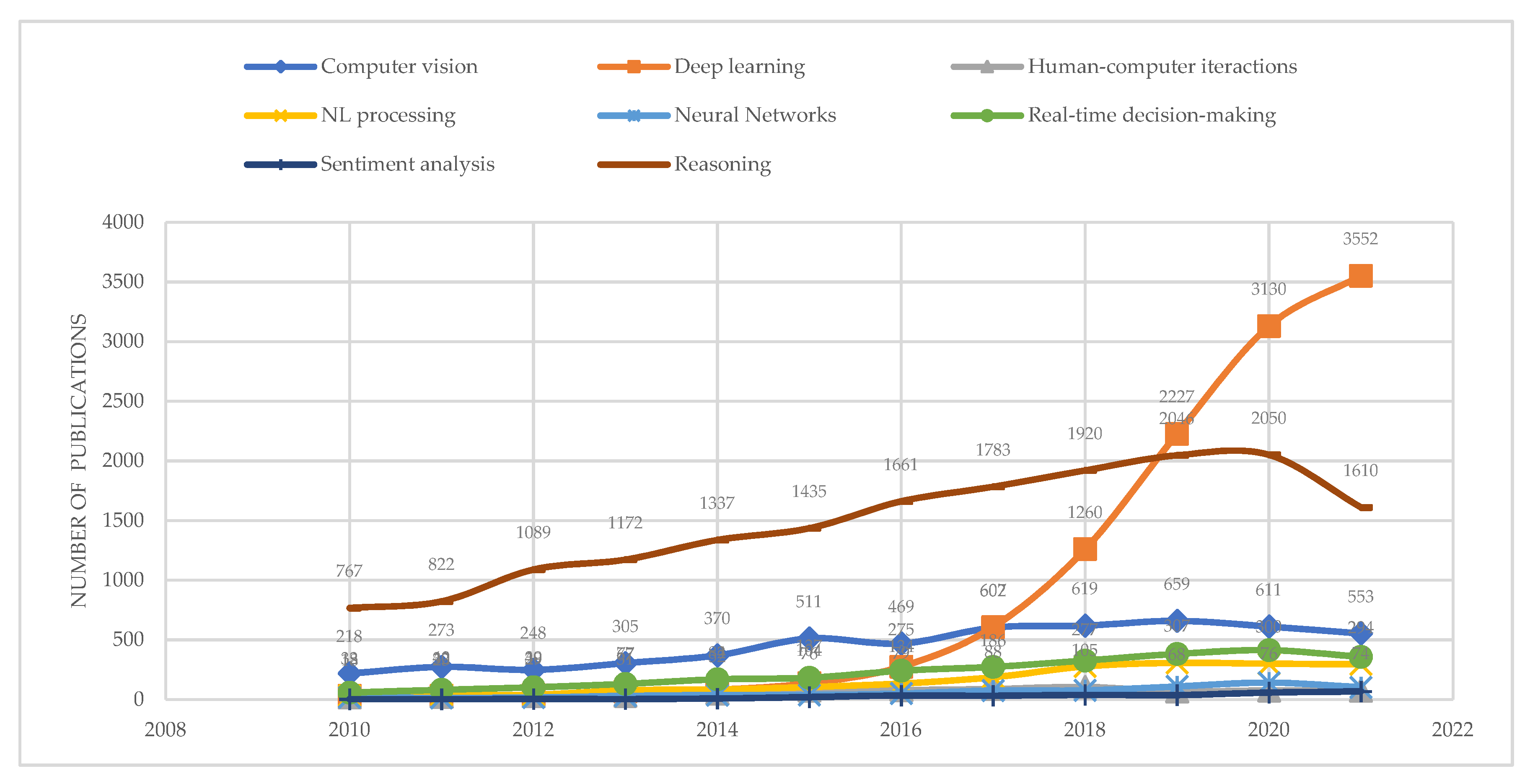

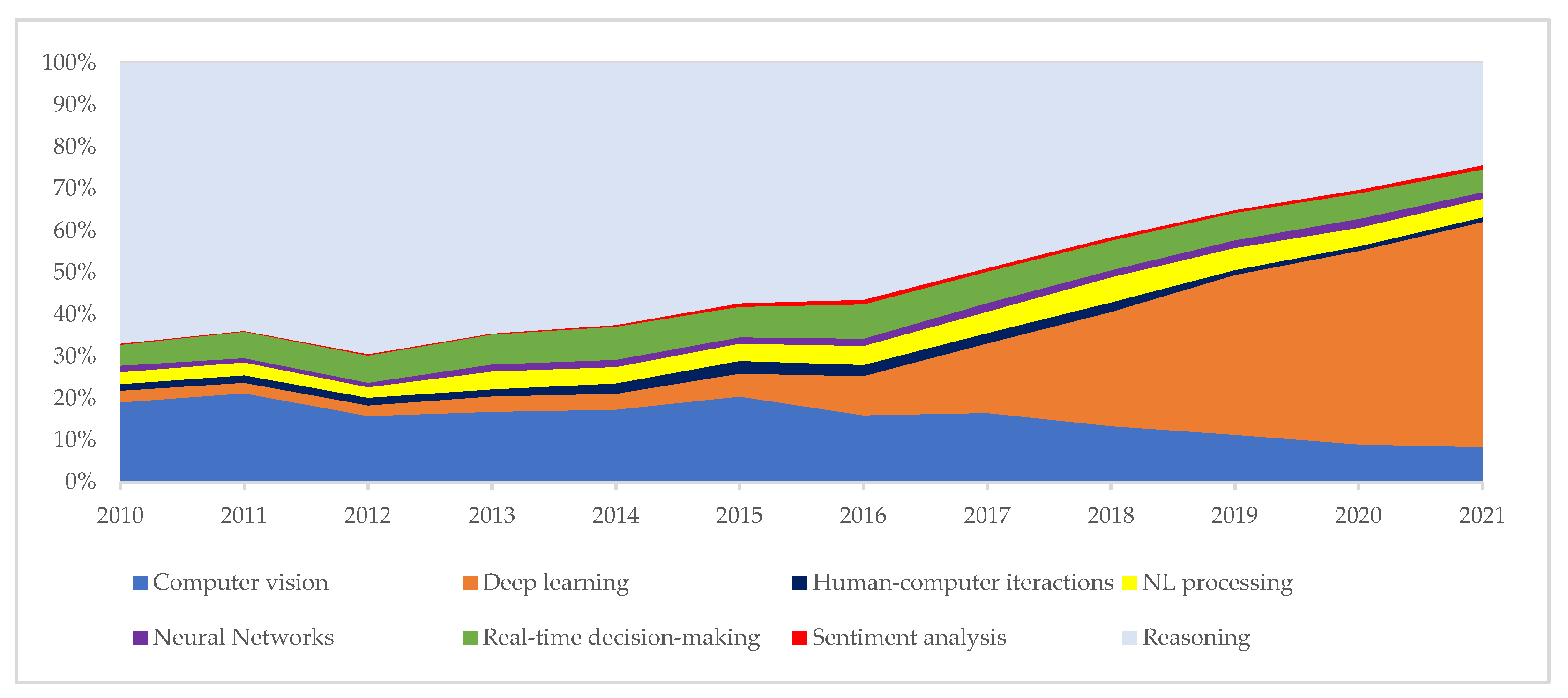
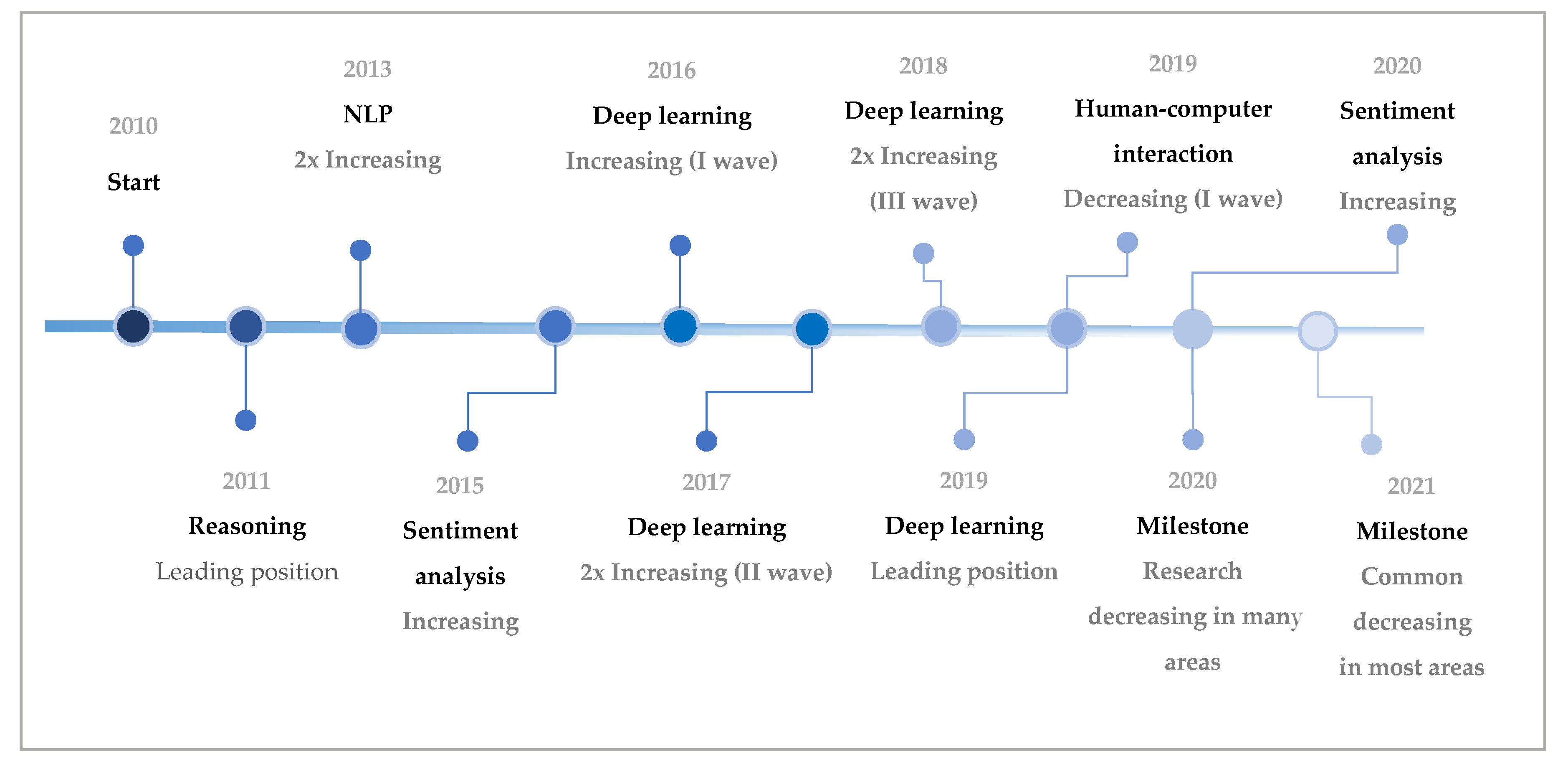
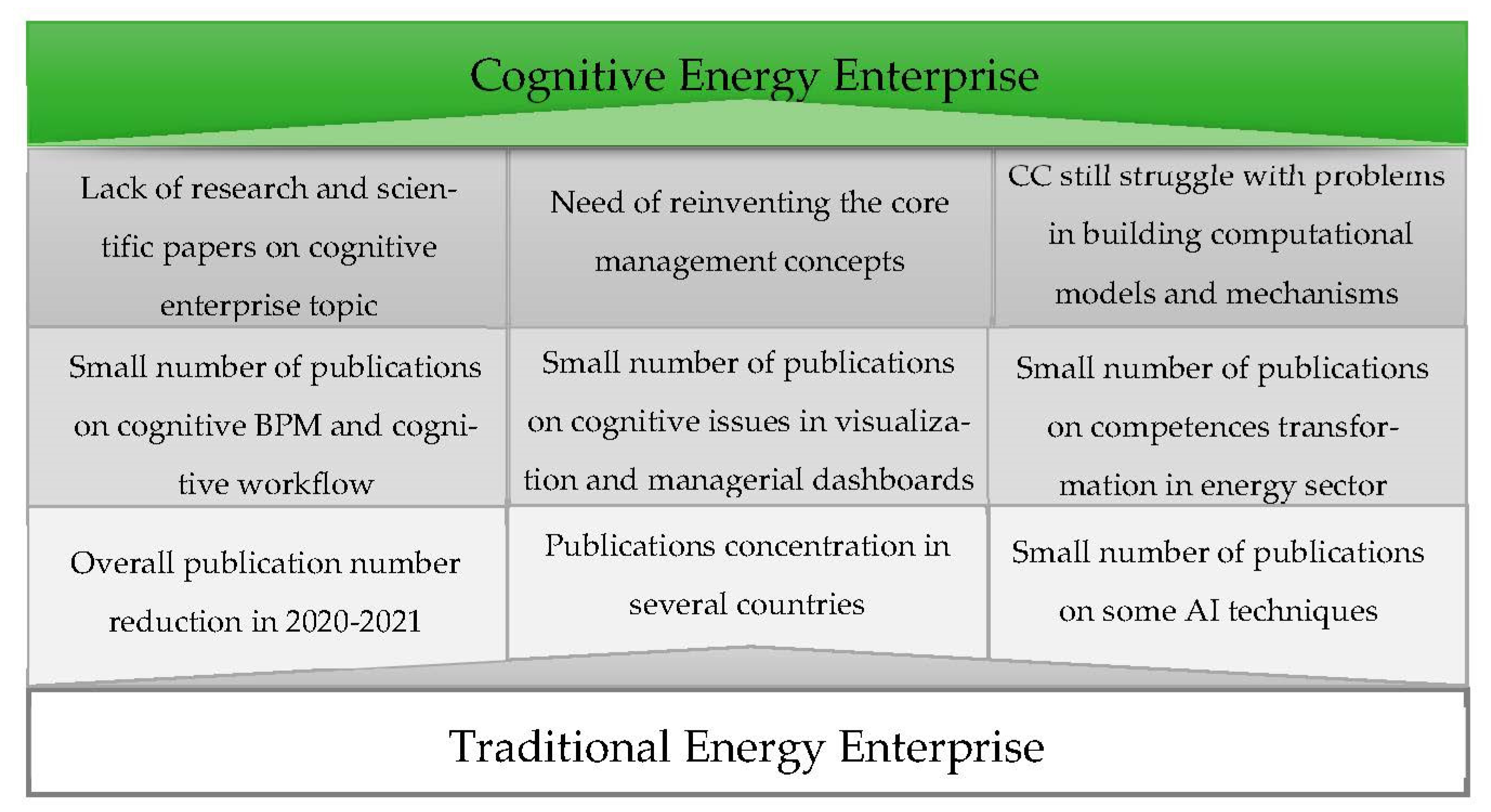
| Publication Years | Computer Vision | Deep Learning | Human–Computer Interactions | NL Processing | Neural Networks | Real-Time Decision Making | Sentiment Analysis | Reasoning |
|---|---|---|---|---|---|---|---|---|
| 2021 | 553 | 3552 | 74 | 294 | 103 | 357 | 68 | 1610 |
| 2020 | 611 | 3130 | 76 | 300 | 141 | 413 | 58 | 2050 |
| 2019 | 659 | 2227 | 68 | 307 | 109 | 382 | 37 | 2046 |
| 2018 | 619 | 1260 | 105 | 277 | 76 | 326 | 39 | 1920 |
| 2017 | 602 | 607 | 88 | 186 | 75 | 273 | 32 | 1783 |
| 2016 | 469 | 275 | 79 | 134 | 50 | 241 | 33 | 1661 |
| 2015 | 511 | 137 | 76 | 104 | 38 | 182 | 20 | 1435 |
| 2014 | 370 | 82 | 52 | 84 | 37 | 169 | 8 | 1337 |
| 2013 | 305 | 67 | 31 | 77 | 30 | 130 | 4 | 1172 |
| 2012 | 248 | 40 | 29 | 39 | 17 | 102 | 5 | 1089 |
| 2011 | 273 | 32 | 23 | 40 | 13 | 81 | 2 | 822 |
| 2010 | 218 | 32 | 18 | 33 | 18 | 57 | 3 | 767 |
| N | Missing | Mean | Median | SD | Minimum | Maximum | |
|---|---|---|---|---|---|---|---|
| Computer vision | 12 | 0 | 453.2 | 490.0 | 162.2 | 218 | 659 |
| Deep learning | 12 | 0 | 953.4 | 206.0 | 1297.9 | 32 | 3552 |
| Human–computer iteractions | 12 | 0 | 59.9 | 71.0 | 28.5 | 18 | 105 |
| NL processing | 12 | 0 | 156.3 | 119.0 | 110.8 | 33 | 307 |
| Neural networks | 12 | 0 | 58.9 | 44.0 | 41.7 | 13 | 141 |
| Real-time decision making | 12 | 0 | 226.1 | 211.5 | 123.7 | 57 | 413 |
| Sentiment analysis | 12 | 0 | 25.8 | 26.0 | 22.5 | 2 | 68 |
| Reasoning | 12 | 0 | 1474.3 | 1522.5 | 446.3 | 767 | 2050 |
| Technology | Affiliation | Country |
|---|---|---|
| Deep learning | DOE | USA, China |
| Computer vision | California State University | China, Germany |
| Sentiment analysis | UPES | USA, China |
| NLP | Chinese Academy of Science | China, USA |
| NN | DOE, Chinese Academy of Science | China, USA |
| Reasoning | DOE | China, Germany |
| Human–computer interaction | DOE | China, Germany |
| Real-time decision making | DOE | USA, United Kingdom |
Publisher’s Note: MDPI stays neutral with regard to jurisdictional claims in published maps and institutional affiliations. |
© 2022 by the author. Licensee MDPI, Basel, Switzerland. This article is an open access article distributed under the terms and conditions of the Creative Commons Attribution (CC BY) license (https://creativecommons.org/licenses/by/4.0/).
Share and Cite
Pilipczuk, O. Cognitive Computing—Will It Be the Future “Smart Power” for the Energy Enterprises? Energies 2022, 15, 6216. https://doi.org/10.3390/en15176216
Pilipczuk O. Cognitive Computing—Will It Be the Future “Smart Power” for the Energy Enterprises? Energies. 2022; 15(17):6216. https://doi.org/10.3390/en15176216
Chicago/Turabian StylePilipczuk, Olga. 2022. "Cognitive Computing—Will It Be the Future “Smart Power” for the Energy Enterprises?" Energies 15, no. 17: 6216. https://doi.org/10.3390/en15176216
APA StylePilipczuk, O. (2022). Cognitive Computing—Will It Be the Future “Smart Power” for the Energy Enterprises? Energies, 15(17), 6216. https://doi.org/10.3390/en15176216






